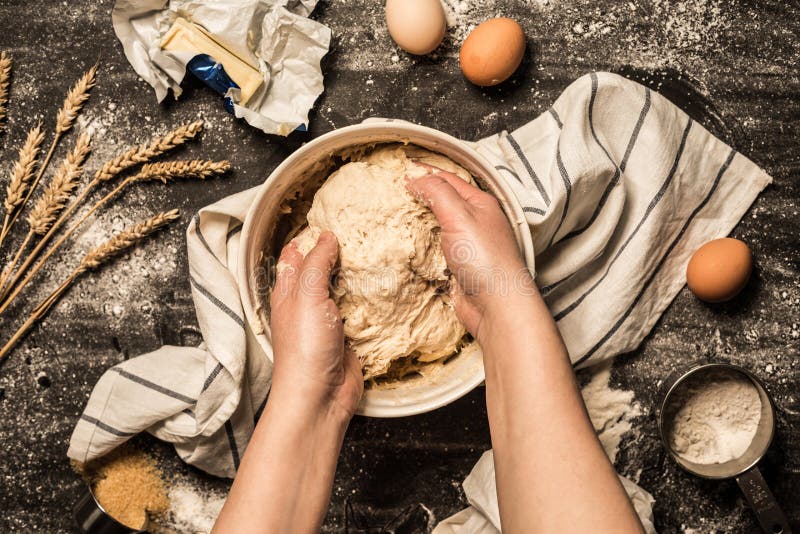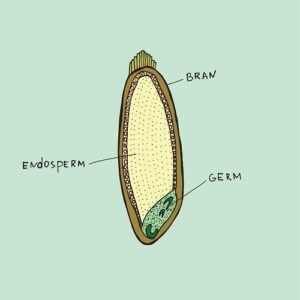==================
Affiliate Statement
Best Baking Tips is supported by our audience. When you purchase through one of our links, we may earn a small affiliate commission. As an Amazon Associate I earn from qualifying purchases. Your cost is not affected.
==================
Types of Whole Grain Flour for Baking
National Whole Grains Month is in September. Many people choose to use whole grains for baking. Everyday, people search the internet for tips and recipes for baking. In fact, many of those want to know about baking with whole grain flour. The reason for this quest? Whole grains provide more flavor and complexity in the flavor. In fact, these whole grains come packed with essential nutrients lacking in the processed white flour commonly used.
People often find solace and comfort in baking. With the internet, we easily find recipes online. Baking, in general, includes a lot of components. However, the main element remains flour. In this article, I list and explain the types of flour for baking. I also point out the best whole grains for baking.

Types of Flour for Baking

Flour is a critical ingredient in baking. The structure, taste, and texture of the baked goods are all based on the type of flour used. There are numerous types of flour for baking available in the market. Knowing such is important for you to reach your goals.
-
All-Purpose Flour
All-purpose flour is a refined wheat flour used in a variety of recipes. As the name implies, you may use it to make bread, cookies, muffins, and other baked products. The cooks also use it to thicken sauces or gravies. Many uses all-purpose flour to coat foods intended for frying or baking, too.
However, all-purpose is NOT whole-grain. To make this white and light-textured flour, processors remove the outer hull, creating a lighter texture. In doing so, the processor also removes much of the fiber content, as well as nutrients.
Many recipes call for all-purpose. You may choose to substitute whole-grain flour instead. Use equal amounts, but you might need to adjust the liquid to compensate for the denser texture. And yes, the finished product will differ somewhat from one made with all-purpose. We think the trade-off is worth learning to use whole grains.
I also noted that I need to reduce the maximum amounts of dough when mixing with my Kitchen-Aid Pro 600, when using whole-grain flour. Again, the lighter texture of the all-purpose makes kneading easier for humans and machines.
-
Whole wheat flour
Whole wheat flour is made by crushing or mashing entire wheat grains. Nothing is taken away from the wheat, so the end product has a coarser, almost gritty texture. The fiber and most of the nutrients remain. Whole wheat flour is usually regarded as a healthier option. It contains natural protein, fiber, and a range of vitamins and minerals.
-
Bread flour
Bread flour contains a higher amount of protein. It is made for yeasted bread making. This protein-rich flour also makes the dough more elastic and lighter, resulting in a chewy and airy texture when baked. Bread flour differs from other flours in that it needs extensive kneading, which results in its delicate and chewy texture.
-
Almond flour
Almond flour offers a popular grain-free and gluten-free option. It is created using blanched almonds, which have had their skins removed. It is a grain-free alternative to breadcrumbs that are often used in baked products. Almond flour contains a high amount of monounsaturated fat, which aids in lowering cholesterol. Research shows that reducing cholesterol helps decrease the risk of heart disease substantially.
-
Oat flour
Oat flour naturally comes from husked oat berries that have been crushed into a fine powder. While oat flour contains gluten, its structure is unstable. As a result, oat flour is best used as a supplement in delicate baked products such as muffins, cake, and cookies, where it can replace a part (but usually not all) of the all-purpose flour in the recipe.
-
Tapioca flour
Tapioca flour, often known as tapioca starch, This gluten-free flour comes from cassava root starch. It provides excellent thickening that outperforms arrowroot and potato starch. Use this for gluten-free baked products to create a crisp exterior and a chewy texture.
It also works well as a thickener in other dishes like homemade pudding, cookie dough, sauces, and gravies. However, it remains the subject of a lot of debate. Some people believe it offers many health advantages, while others consider it dangerous.
Note: The majority of the harmful health consequences seem to come from eating cassava root starch that has not been correctly processed. Diabetics need to use caution with tapioca, too. While a whole grain, Cassava contains high levels of carbohydrates. Doctors and nutritionists, therefore, consider Tapioca products unsuitable for people with diabetes or pre-diabetes.
-
Jowar/Sorghum flour
While not well-known, Jowar/Sorghum shines among the world’s healthiest grains. Jowar, often known as sorghum in English, recently gained increased popularity as the “new quinoa” because of its gluten-free properties and other health advantages. It contains antioxidants as well as minerals, including iron, calcium, phosphorus, and potassium. Processed into flour, it makes a good base for products such as rotis, bhakri, cheela, and dosa.
-
Other whole-grain options
Other grains that often appear as flour include:
- Amaranth
- Barley
- Brown rice
- Buckwheat
- Corn
- Millet
- Quinoa
- Rye
- Spelt
Some of these perform best when used with wheat, while others work alone or with. Each requires a slightly different adjustment to the added ingredients to compensate for textures and performance.
Healthy Baking
As you can see from the list of the types of flour for baking, most of the flours have their own advantages and disadvantages. In choosing what kind of flour to bake with, keep in mind what you or the person you will be giving the product to prefers. More and more, people opt for the healthiest ingredients. In line with the National Whole Grains Month, I’ll be discussing whole grains next.
Whole Grain
Whole grains are basically the husked berries or commonly known as “kernels,” of grain-bearing plants. These grains are then dried and then left whole without any other refinement process. This provides a critical difference from refined flours when choosing the types of flour for baking. In summary, Whole grains are “whole” because nothing was removed or added to the grains during the entire process of how they came to be.
Whole Grain Flour
Whole grain flour is one of the two types of grain flour. The two types are Whole flours and Refined flours. Whole grain flour belongs to the former, where all three parts of a kernel are still present. The three parts of a kernel are the bran, germ, and endosperm.
 Bran is the fiber-rich outer layer of the kernel. B vitamins, iron, copper, and other healthy stuff are all found in the bran. The conversion of starch into glucose is slowed by bran and fiber, resulting in a constant blood sugar level.
Bran is the fiber-rich outer layer of the kernel. B vitamins, iron, copper, and other healthy stuff are all found in the bran. The conversion of starch into glucose is slowed by bran and fiber, resulting in a constant blood sugar level.
- Germ is the seed’s center, where development takes place. It is the embryo of the wheat plant and is the tiniest component of the kernel. The germ is frequently removed from flour during milling due to the high-fat content, which can shorten the shelf life of wheat. It is packed with healthful fats, vitamin E, and antioxidants.
- Endosperm is the inner layer of the kernel. It is the germs’ food source. The endosperm makes up the vast majority of the kernel. It contains carbohydrates, protein, and trace amounts of B vitamins and minerals.
Experts consider baking with whole-grain flour as a healthier option because the kernels generally retain their valuable nutrients. In fact, we know that refined flours lose much of their beneficial nutrients during their refining process. In terms of nutrition, the less process a kernel receives, the more nutrients or benefits you can get from consumption.
Best Whole Grains for Baking, Baking with Whole Grain Flour
-
Amaranth
A relatively unknown flour, Amaranth flour originates from the amaranth plant. The plant itself originated in Mesoamerica, but now grows in both North and South America. Amaranth is a gluten-free, nutritious grain that is high in fiber, protein, and minerals. Studies show Amaranth’s link to various health advantages, including less inflammation, lower cholesterol, and weight loss.
Note: Amaranth for baking should not be mistaken with Amaranth dye, which is banned in the United States.
-
Barley
Is a cereal grain that is used in the production of bread. It is a whole grain, which means it is high in fiber, vitamins, and minerals. It has a bit chewy texture and a somewhat nutty flavor that goes well with various meals. Barley is an excellent source of fiber, molybdenum, manganese, and selenium when eaten whole. It has been linked to several health advantages, including better digestion, weight loss, lower cholesterol, and a healthier heart.
-
Buckwheat
Buckwheat, a pseudo-cereal that is neither grass nor grain and has no relation to wheat. Despite the obvious “wheat” in the name, it is gluten-free. It is a seed, and it is a superfood at that. Buckwheat flour has more protein, dietary fiber, and B vitamins than oat or whole wheat flour. This flour contains a good source of potassium and key amino acids. You can taste its strong earthy flavor that can be slightly bitter, making it difficult to discern whether it is best used in sweet or savory recipes.
-
Corn
You can make Corn or Maize flour by pulverizing whole corn kernels into a fine powder. It is a whole grain flour since it contains the corn’s hull, germ, and endosperm. As a result, it has protein, fiber, starch, and vitamins and minerals present in whole corn. It has a delicate and silky texture, akin to whole wheat flour. You can taste its earthy, sweet flavor that comes out when it is cooked, whether it is baking, frying, or grilling. One of the best whole grains for baking is Corn flour because it is highly versatile, and it may be used in bread, muffins, waffles, and other baked goods.
-
Millet
It is a high-protein, high-antioxidant, and high-nutrient whole grain. In addition, Millet has grown in favor of the West due to its gluten-free status and high levels of protein, fiber, and antioxidants. It also offers a slew of health advantages, including lowering blood sugar and cholesterol. Again, it is also gluten-free, making it an excellent option for those with celiac disease or who follow a gluten-free diet.
-
Oat
Is a whole-grain flour that is simple to prepare. It is produced from oats. Oat flour has a delicate texture and a pleasantly nutty taste. You can use to make baked items a smooth and fluffy surface, with a subtle flavor that is overshadowed by vanilla, nutmeg, and butter.
-
Quinoa
Is a high-protein, high-fiber, high-vitamin, and high-mineral superfood. Also, Quinoa, like other gluten-free or whole-grain flours, may be ground to a fine powder. It is fantastic in baking since it is easy to work with and has all the nutrients found in the whole seed.
In addition, Quinoa has more vitamins, minerals, protein, and fiber than common grains like whole wheat and oats. Quinoa is also high in antioxidants, including quercetin and kaempferol, which can help to neutralize potentially damaging chemicals known as free radicals. Free radicals are unstable atoms that can harm cells, resulting in disease and premature aging.
-
Rye
Rye is a tough cereal grass used for grain production. The milling of rye grain produces rye flour. Rye flour is the only flour other than wheat that may be used to produce yeast-raised loaves without mixing. It is a grain with a nutritional value equivalent to wheat. Whole-grain rye flour, on the other hand, is higher in nutritional fiber than whole-grain wheat flour. Fiber content improves digestive function and helps prevent constipation.
-
Spelt
An old-world whole grain, Spelt now grows all over the world. As a wheat variety, spelt flour contains a high carbohydrate and fiber content, with blood sugar effects similar to wheat. It also includes specific vitamins and minerals and is a good source of dietary fiber.
Whole grain spelt offers one of the best whole grains for baking because it has a high carbohydrate and fiber content. It offers blood sugar effects similar to wheat. In fact, consuming spelt or other whole grains regularly helps prevent obesity, heart disease, and type 2 diabetes.
In Conclusion
Baking with whole-grain flour offers substantial health benefits. The benefits include numerous vitamins and minerals contained in the kernels. And of course, the added fiber, another health essential. With so many choices of types of flour for baking, deciding which to use often seems challenging.
However, whichever you choose, baking with whole grain flour offers variety to your culinary fun. Choose one today and another tomorrow. In fact, the best whole grains for baking ultimately remain your choice. The varieties listed each possess unique tastes and nutrient contents. In fact, also consider whether you want to use gluten-free or high-gluten whole grain flours in each baking project.
Read More






